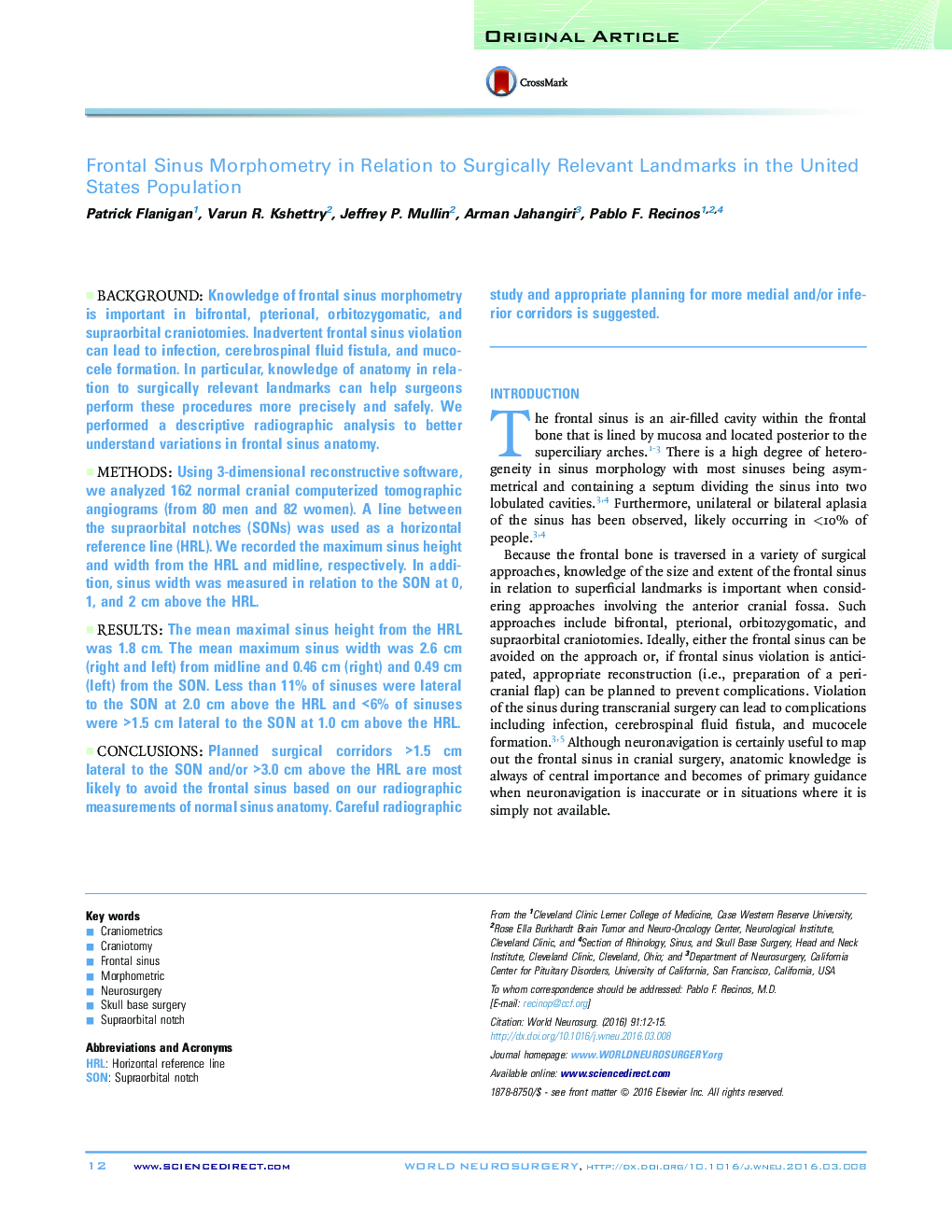| کد مقاله | کد نشریه | سال انتشار | مقاله انگلیسی | نسخه تمام متن |
|---|---|---|---|---|
| 3094520 | 1581464 | 2016 | 4 صفحه PDF | دانلود رایگان |
BackgroundKnowledge of frontal sinus morphometry is important in bifrontal, pterional, orbitozygomatic, and supraorbital craniotomies. Inadvertent frontal sinus violation can lead to infection, cerebrospinal fluid fistula, and mucocele formation. In particular, knowledge of anatomy in relation to surgically relevant landmarks can help surgeons perform these procedures more precisely and safely. We performed a descriptive radiographic analysis to better understand variations in frontal sinus anatomy.MethodsUsing 3-dimensional reconstructive software, we analyzed 162 normal cranial computerized tomographic angiograms (from 80 men and 82 women). A line between the supraorbital notches (SONs) was used as a horizontal reference line (HRL). We recorded the maximum sinus height and width from the HRL and midline, respectively. In addition, sinus width was measured in relation to the SON at 0, 1, and 2 cm above the HRL.ResultsThe mean maximal sinus height from the HRL was 1.8 cm. The mean maximum sinus width was 2.6 cm (right and left) from midline and 0.46 cm (right) and 0.49 cm (left) from the SON. Less than 11% of sinuses were lateral to the SON at 2.0 cm above the HRL and <6% of sinuses were >1.5 cm lateral to the SON at 1.0 cm above the HRL.ConclusionsPlanned surgical corridors >1.5 cm lateral to the SON and/or >3.0 cm above the HRL are most likely to avoid the frontal sinus based on our radiographic measurements of normal sinus anatomy. Careful radiographic study and appropriate planning for more medial and/or inferior corridors is suggested.
Journal: World Neurosurgery - Volume 91, July 2016, Pages 12–15
